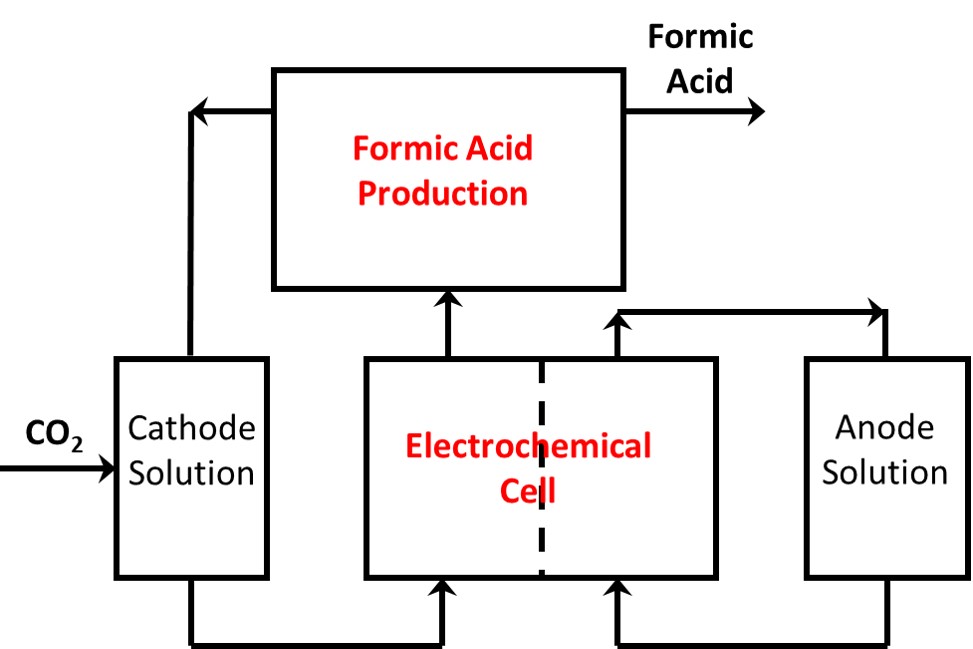(600d) Electrochemical CO2 Utilization: Scalable System Operation for Formic Acid Production
AIChE Annual Meeting
2020
2020 Virtual AIChE Annual Meeting
Sustainable Engineering Forum
Novel Approaches to CO2 Utilization I
Tuesday, November 17, 2020 - 8:45am to 9:00am
University of Kentucky’s Center for Applied Energy Research (UK CAER) is currently investigating reactor designs to address the challenges associated with electrochemical CO2 conversion to FA [4]. The current reactor system employs: (1) an organic-based charge carrier which shuttles charge directly to the catalyst to enable CO2 reduction to FA; (2) novel electrode materials to mitigate large voltages and improve conductivity; and (3) a flow system which not only allows for the volumetric scale-up of both charge carrier and catalyst, but also decouples the charger carrier re-energized and FA production processes to protect the catalyst’s stability due to overpotential. Through careful adjustment of electrode, charge carrier, and electrolyte selection, cell resistances have decreased by over 15%, facilitating conduction necessary for effective CO2 reduction to FA. The system uses a highly specific engineered catalyst, which has produced over 100 mM FA at a rate of over 10 mM FA/hour following the aforementioned electrode/charge carrier changes. System design considerations (flow rate, bulk volume) and modeling of the system will also be discussed.
- Lu X, Leung DY, Wang H, Leung MK, Xuan J. Electrochemical reduction of carbon dioxide to formic acid. ChemElectroChem. 2014 May 13;1(5):836-49.
- Spurgeon JM, Kumar B. A comparative technoeconomic analysis of pathways for commercial electrochemical CO 2 reduction to liquid products. Energy & Environmental Science. 2018;11(6):1536-51.
- Pérez-Fortes M, Schöneberger JC, Boulamanti A, Harrison G, Tzimas E. Formic acid synthesis using CO2 as raw material: Techno-economic and environmental evaluation and market potential. international journal of hydrogen energy. 2016 Oct 5;41(37):16444-62.
- Omosebi, A., Landon, J., Thompson, J., and Liu, K. “Process Intensification for Electrochemical Utilization of CO2.†Proceedings of AIChE 2019 Annual Meeting. 11 Nov 2019.

